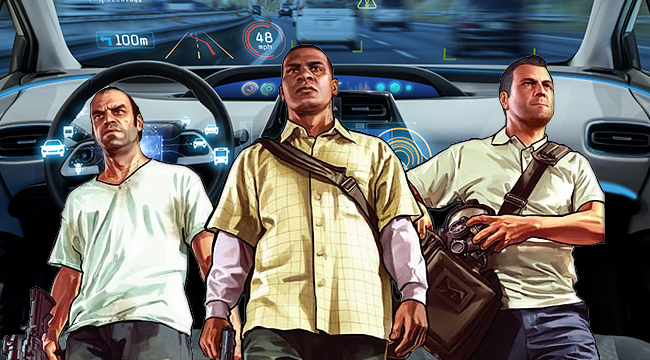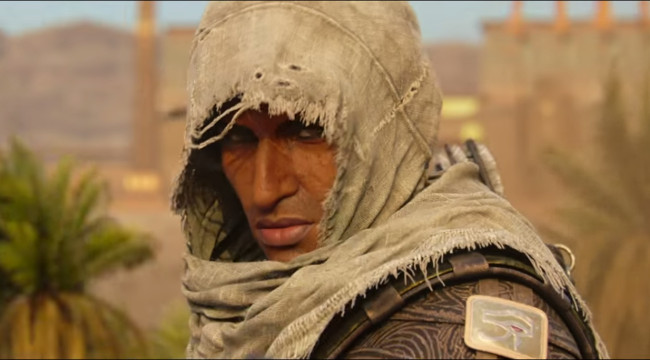
For most of us, the first time we ever encountered artificial intelligence was in a video game. It might have given us a quest, jumped out and cost us a 1up, or done a host of other things. And ever since, critics and fans have pushed developers to create smarter, more challenging enemies. The Shy Guys (low-level and simple enemies) of yesteryear are the enemies who take cover when they see you now. But unseen to most of us, AI and video games have pushed each other further, to the point where video games are teaching AI new tricks while advanced AI is giving players new challenges.
To understand how it works, let’s go back to that Shy Guy for a minute. “Traditional AI is a lot about answering the command, ‘If THIS happens then do THAT.’” Yves Jacquier, head of Ubisoft’s advanced AI project La Forge, explains to Uproxx. “When you present a new situation to this AI it simply does not react.” In other words, the Shy Guy can react to you jumping on his head, but that’s about it. Increasingly, that kind of AI is becoming a memory.
In 2001, Grand Theft Auto III surprised gamers with a living city full of people who walked, talked, and, if you angered them enough, they’d turn the tables on you, pulling a gun or even coming at you barehanded. Rockstar kept evolving that approach, well beyond humans. Red Dead Redemption had an AI ecosystem where players could observe predators hunting prey, or found themselves on the menu. Middle-Earth: Shadow Of Mordor used machine learning to create a “nemesis,” an enemy that dogged you throughout the game, and Alien: Isolation used it to create a Xenomorph that was a crafty, bloodthirsty hunter.

This isn’t merely limited to big action titles. The indie action game Echo has you literally fight against yourself. As the game learns your preferred strategies, it sends “Echoes” after you. Like to hide? It’ll search every nook and cranny. Prefer to stand and fight? It’ll swarm you.
Now, we’re seeing AI that can react to anything you throw at it. “Learning-based AI, which is what we’re researching, works by learning how it should behave based on examples, then predicts how it should behave in the face of a situation,” Jacquier explains. But there still needs to be a balance. Developers don’t want players to be “overwhelmed.”
There are, of course, non-game related applications with this tech, though there are still hiccups. Self-driving cars are a good example: They “learn” how to drive by getting on the road. But machine learning requires the AI to repeat thousands of scenarios thousands of times, over and over again, to refine its reactions. And some of those situations, like, say, choosing between injuring a pedestrian and crashing into a tree, aren’t seeing volunteers line up to figure them out.
The solution? In part, Grand Theft Auto V, which some researchers are using in conjunction with real world/road research. Contrary to the game’s reputation, most of GTA5‘s NPCs follow the rules of the road, but they break them just often enough to surprise players, and they’re easily configurable to be better or worse. They blow red lights, they get in jams, they lose control of their vehicles. It’s a perfect tool for researchers as they try to create the perfect level of chaos to serve as sort of a mental gym for the AI. Clearly, the future of video games and AI is increasingly intertwined, even as a tool in the design process.

AI recently created a copy of Super Mario Bros., for example, just by watching somebody play it. It learned the rules of the game and created them perfectly. This doesn’t mean that developers will be replaced tomorrow, but rather that as AI improves, it can take the grunt work out of designing games, and that same AI can be used to learn how players enjoy the game, and adapt it accordingly. “If you free up 20% of a programmers time, it means more time for other cool features they can focus on or to fine-tune their systems,” Jacquier explains.
Video games are helping other software get better at their jobs. La Forge recently announced the debut of Commit-Assist, AI designed in collaboration with Concordia University that made use of Ubisoft’s quality control department. “One of their students was working on AI for bug prediction and needed real-life data to advance his research. With more than ten years of codes and bug history logs, the student was able to use our information to prove the AI that resulted in the Commit-Assist tool.” Jacquier explains. The AI used the bug data to spot patterns in the bugs and extrapolate that to the rest of the code “Then when a programmer writes a line of code, with the AI in place, it can predict whether it might be buggy or not, like an experienced assistant would do.”
All this AI work is translating to better games. Red Dead Redemption 2 recently revealed that it was upping the ante on in-game AI. In most open-world games, you can be a saint or a serial killer, and it won’t matter to the game’s main plot. But Red Dead takes a different tack: Rockstar’s games has missions that unfold based not on a single big decision, but on a broad string of little ones: Who do you bring on your bank robbery? Do you sneak in through the back or walk in through the front? Do you crack the safe quietly or blow it open? And when you escape, do you try to sneak away or come out guns blazing? It affects not only the mission but how you’re treated in ways big and small as the game unfolds.
It’s all quite enticing, but how close are we to the limit of this innovation and when will AI take that next step toward psychological real gaming? When we asked Jacquier, he told us there were two practical limits and one theoretical one: Consciousness. “If you see the human brain as a number of neurons that are connected in layers in very complex ways, then there is technically no reason why one could not replicate this with virtual neurons. Recent deep learning results are compared to intuition, so what is the cognitive limit we will reach in 100 years from now?”
For now, this specific technology is the province of academic work and medical research. Surgeons are working on the Virtual Brain, a model of the mind that will be used to simulate tumors and predict brain function after surgery. But as neural networks get cheaper, machine learning becomes more commonplace and powerful, and consumers get used to the idea of truly thinking machines, the day is not far off where your ultimate foe could sit inside your game console, ready to match wits with you at any time, at any game.
